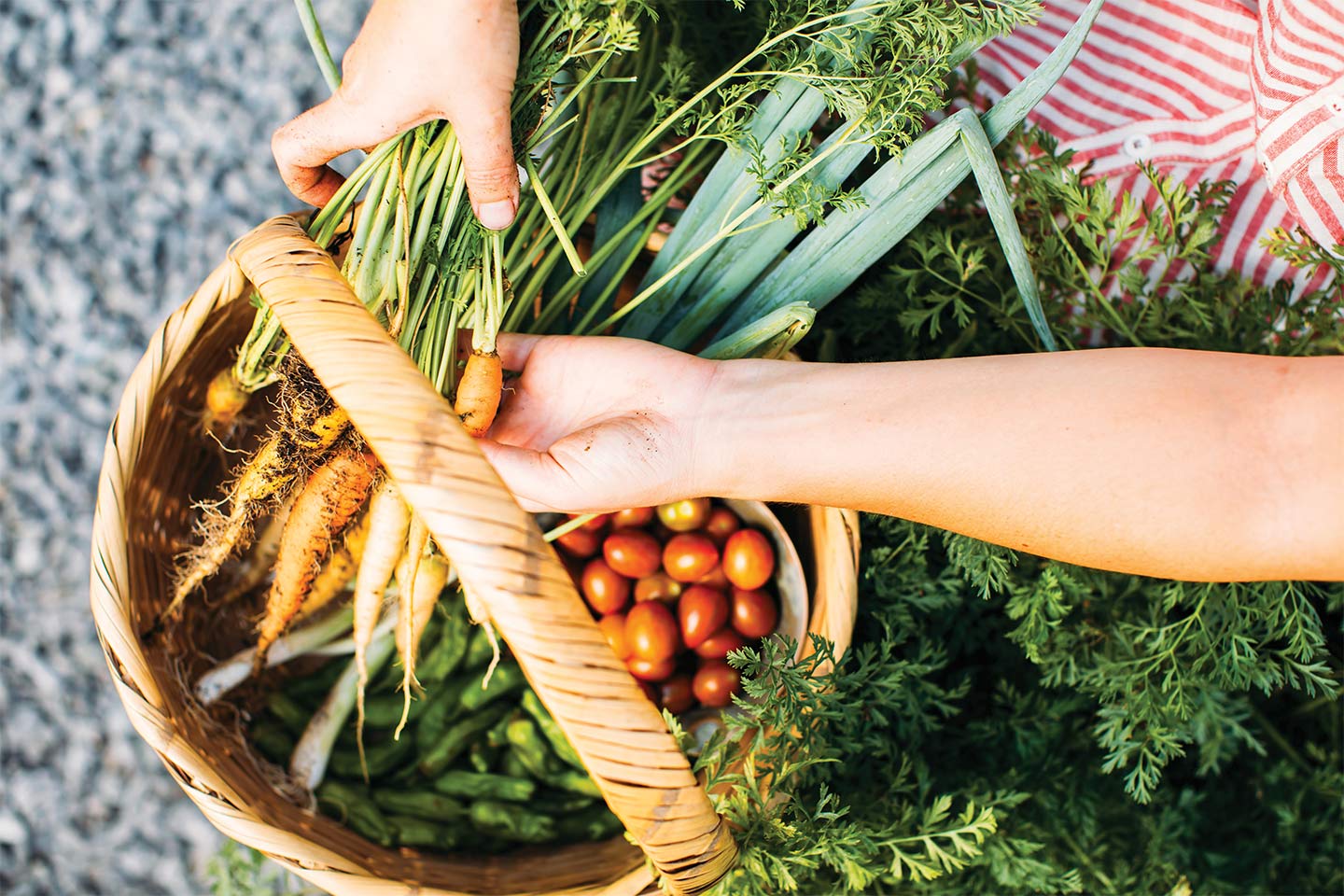
10 minute read
Master Gardeners
Each of these local gardeners took a hobby to a passion by upskilling their knowledge with a Master Gardener certification. Read on to find out what they learned in the Master Gardener course, what they are planting, why they love to garden, and more.
By Kristen Dee
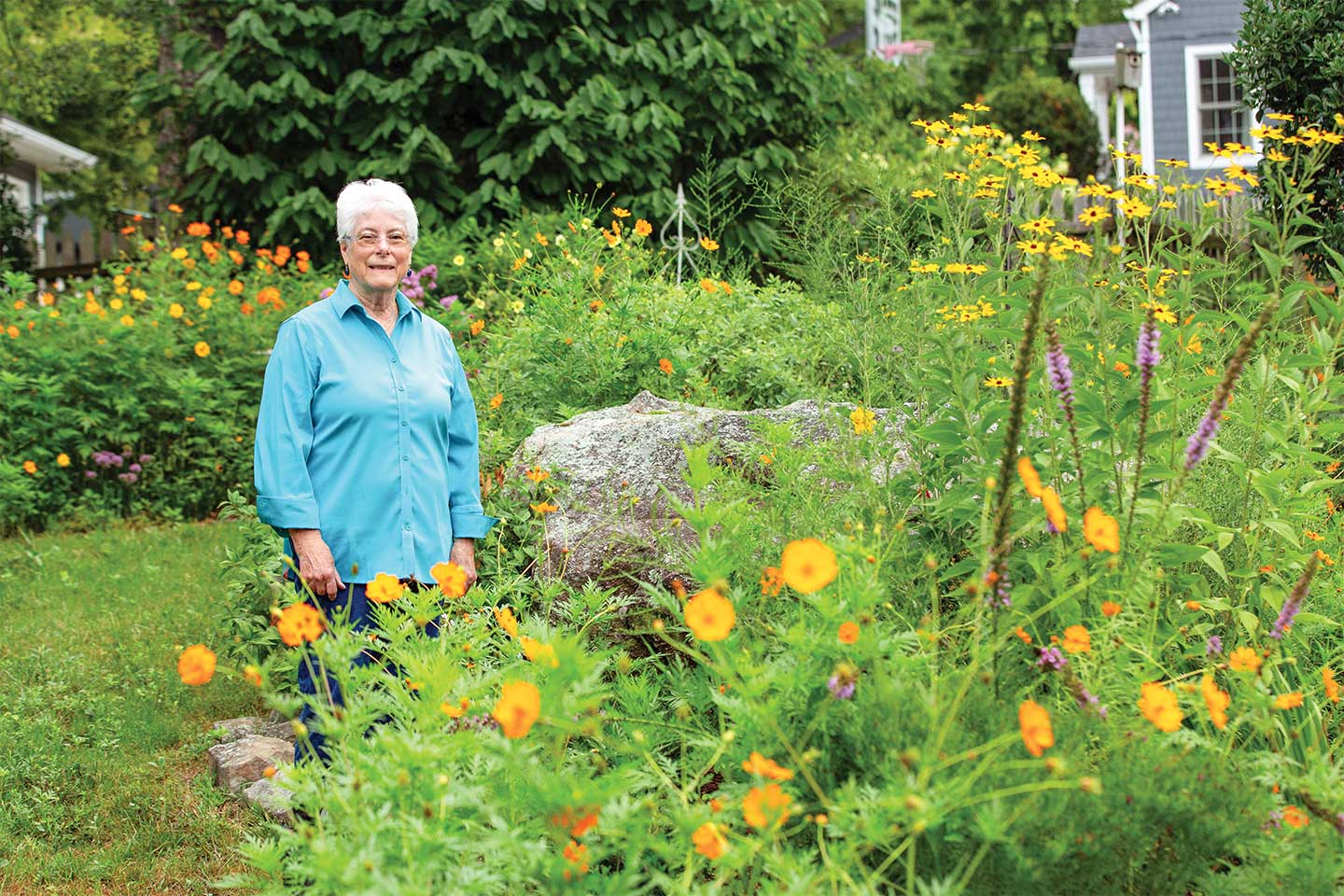
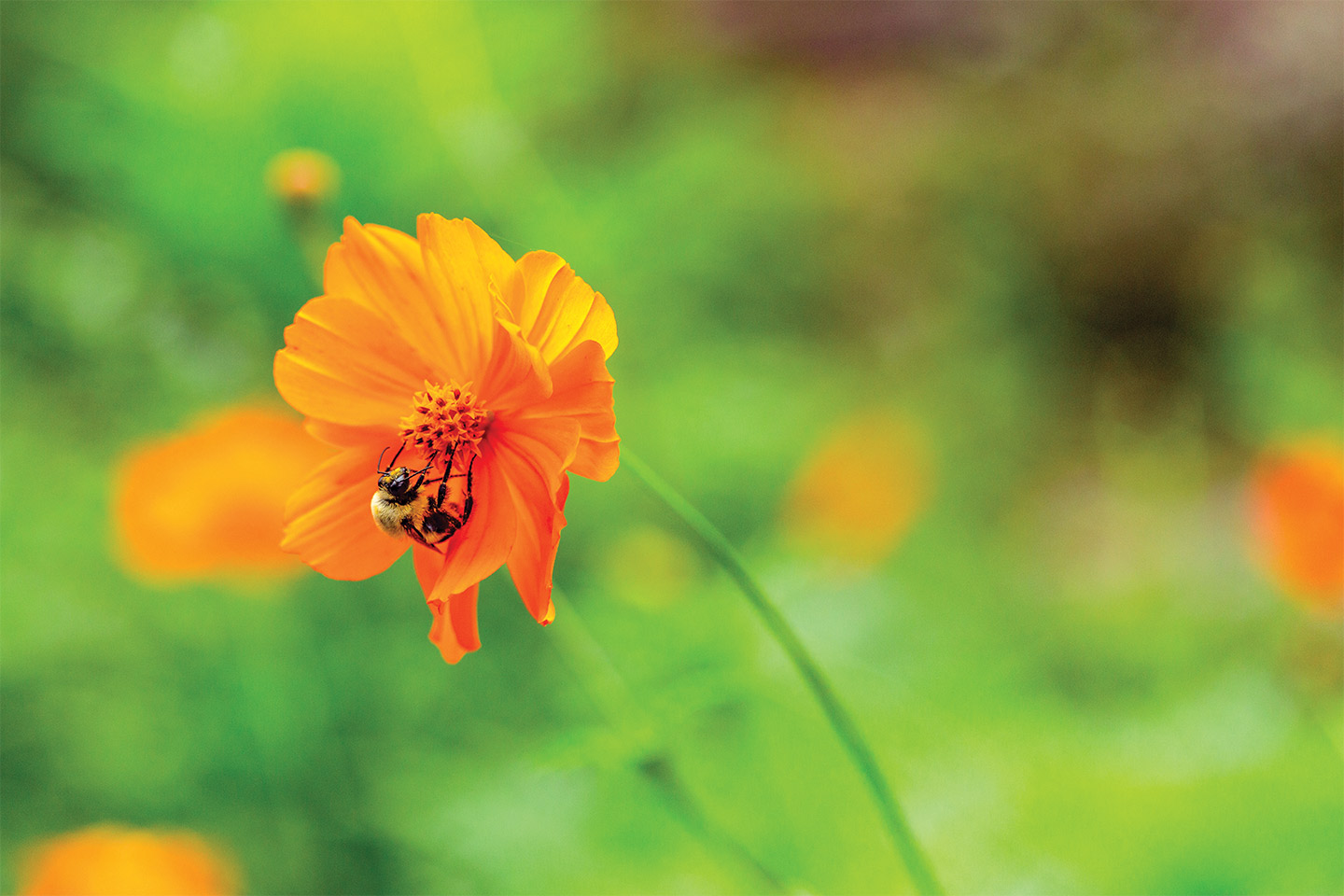
Photography by Rich Smith
Ann Brown
Resulting from a childhood spent outdoors riding horses, fishing, and raising chickens, Ann Brown gained a love for nature and an appreciation for wildlife. After retiring and moving to Lookout Mountain, Brown was up for the challenge that her new yard presented, which led her to sign up for a Master Gardener course.
The course combined academic training with more hands-on opportunities for learning. Armed with a new wealth of gardening knowledge, Brown created a pesticide-free garden which is not only beautiful but is also a sanctuary for wildlife and pollinators. “My pollinator gardens are filled with a diverse group of native flowers, and they are alive with bees, butterflies, birds, and small mammals,” she says. “I concentrate on adding native host trees, shrubs, and flowers to help caterpillars thrive. I’ve filled my yard with pollen and nectarrich plants to support and sustain native insects and bees. I have incorporated over 50 different kinds of host plants in my garden to support the life cycles of swallowtails, fritillaries, skippers, sulphurs, and monarchs.”
In addition to her own garden, Brown is very involved in the local gardening community. “My volunteer work at places such as the Chattanooga Food Bank, Tennessee Aquarium, and Reflection Riding has been invaluable in helping me understand plants, their care, and sustainability,” Brown says. She is also involved in TN Valley Wild Ones activities, writes articles for the Lookout Mountain Mirror, advocates for pollinator conservation, and worked with other Master Gardeners to make Chattanooga a National Park City, which aims to make Chattanooga a greener, healthier, and more sustainable community. As a result of her many conservation and community efforts, last year Brown was awarded the prestigious NSDAR Conversation Award.
“I don’t consider myself a professional gardener,” Brown says, “but gardening has definitely become my vocation since retiring. The daily connection to nature has increased our sense of well-being and satisfaction. New friends and social connections through community gardening projects have filled my time with meaningful experiences. Gardening has brought me joy, and a sense of purpose and well-being.”

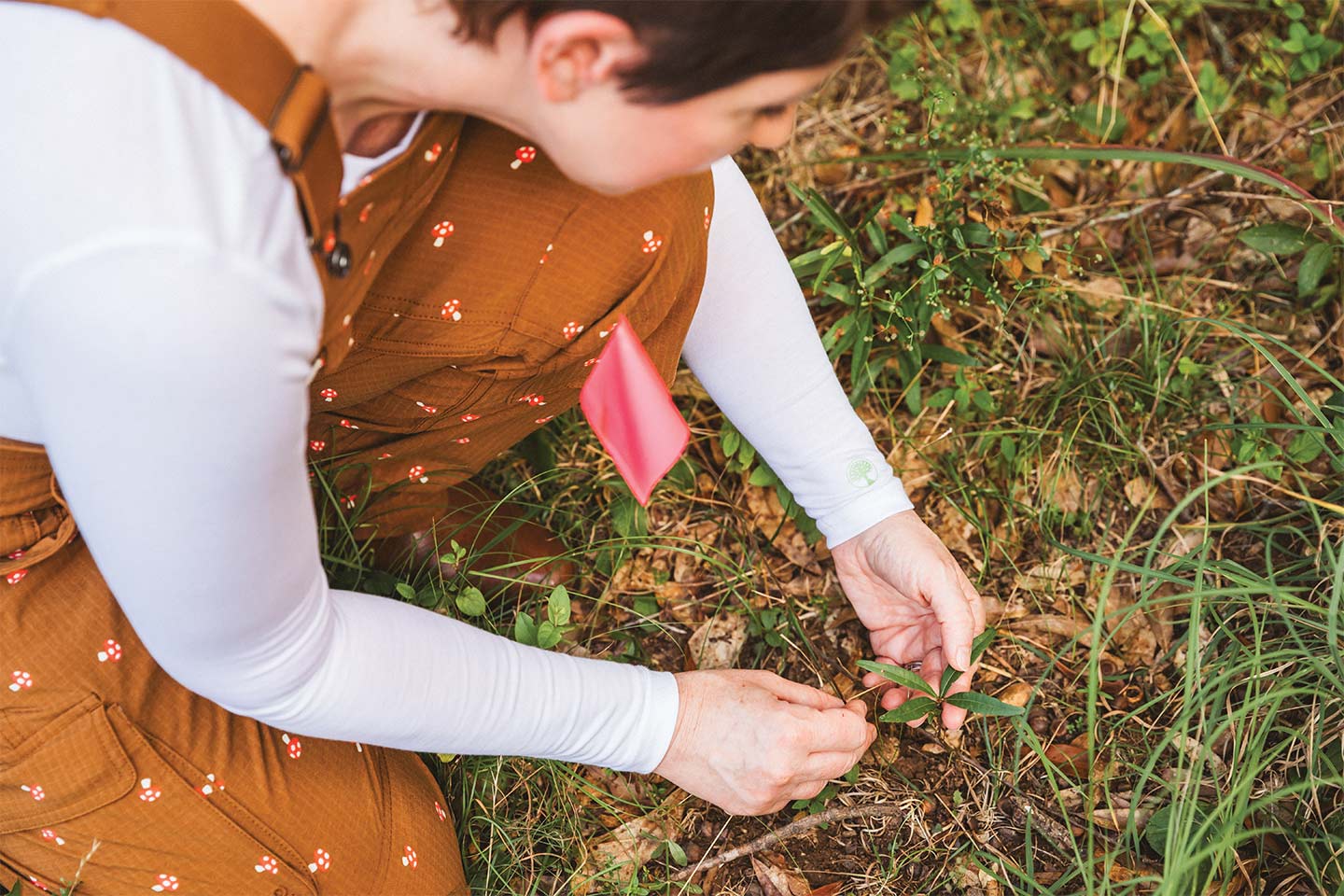
Photos by Sarah Unger
Kym Martin
For six years, Kym Martin has been supporting monarch butterfly conservation efforts through education, habitat support, community science, and migration tracking. Martin’s efforts not only stem from her own passion for the outdoors, but they are in honor of her late grandfather, Charlie, from whom she inherited a love of gardening and butterflies. “When I visited, he would show off his latest plants and tell me about the monarchs that came each year. After he passed, I named my greenhouse ‘Charlie’ after him. Everything good that comes out of the greenhouse comes from him,” she says.
Martin has been a Certified Master Gardener for two years, after taking the University of Tennessee’s 40-hour research-based training classes, completing 40 hours of volunteer community service, and eight hours of continuing education classes. She then joined Master Gardeners of Hamilton County, a nonprofit volunteer organization focused on providing horticulture education to residents and consumers in Hamilton County with a goal of improving the lives of Tennesseans. “I think one of the reasons I wanted to become a Master Gardener was for the collaboration and friendship,” she says. “Through plants, we often find a shared language.” She is very involved with the organization, including serving on the board of directors in 2023 and sponsoring and managing a Magical Monarchs booth at events. In addition to cultivating her own butterfly garden, Martin oversees the Monarch Waystation Restoration Project at Reflection Riding, which provides resources necessary for monarchs to produce successive generations and sustain migration as habitat loss threatens their existence. “The need for host plants for larvae and energy sources is critical,” she says. “Milkweed is the only host plant where a female monarch will lay its eggs, and monarch caterpillars feed exclusively on milkweed. The long-term goal is to educate the community on the importance of monarch preservation.”
For Martin, gardening has changed her mindset and outlook on life. She reflects on the impact gardening has on her, saying, “Since I started spending so much time gardening, I am much more curious about nature. I’m more present, and I feel like a kid again, full of curiosity and wonder.”
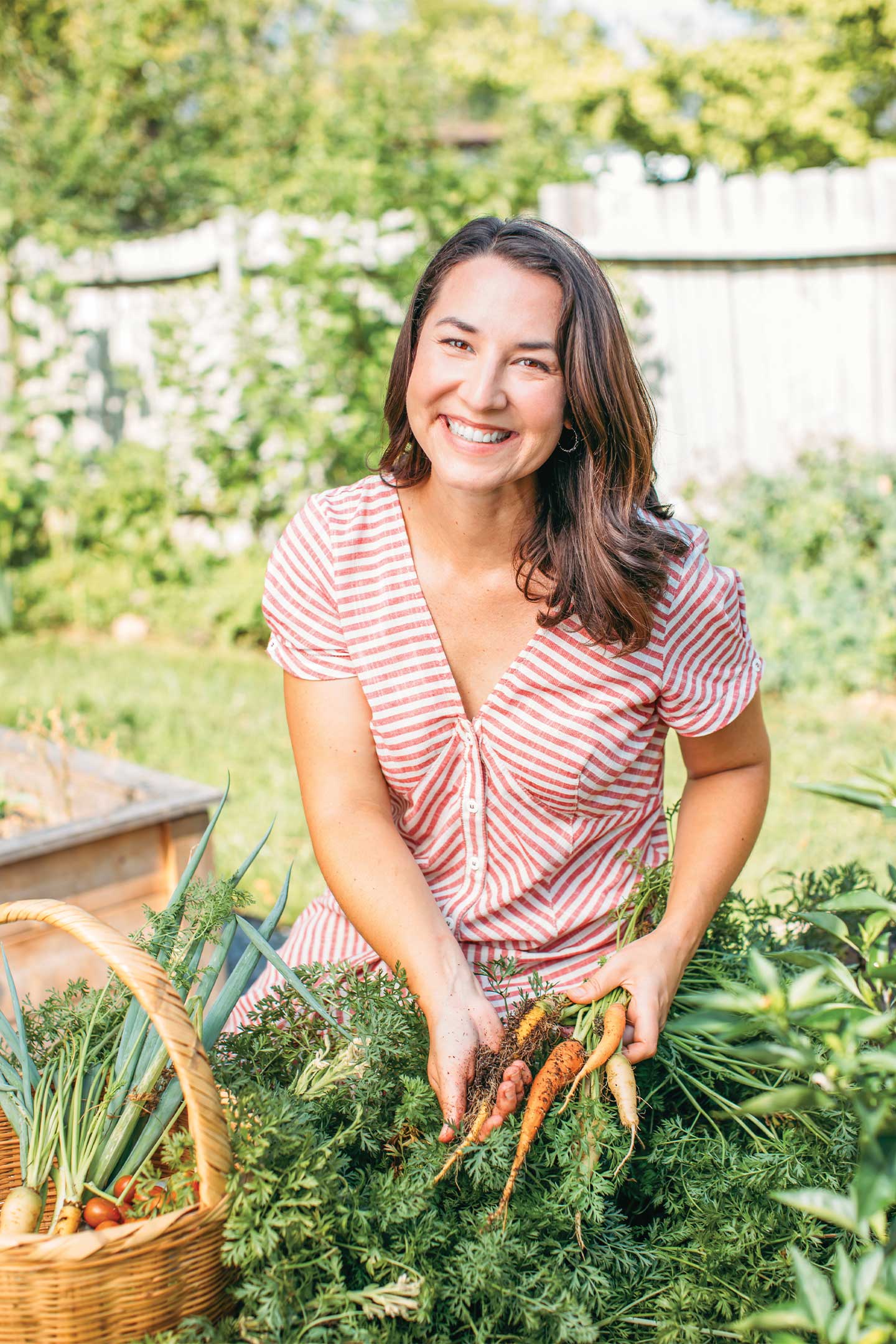
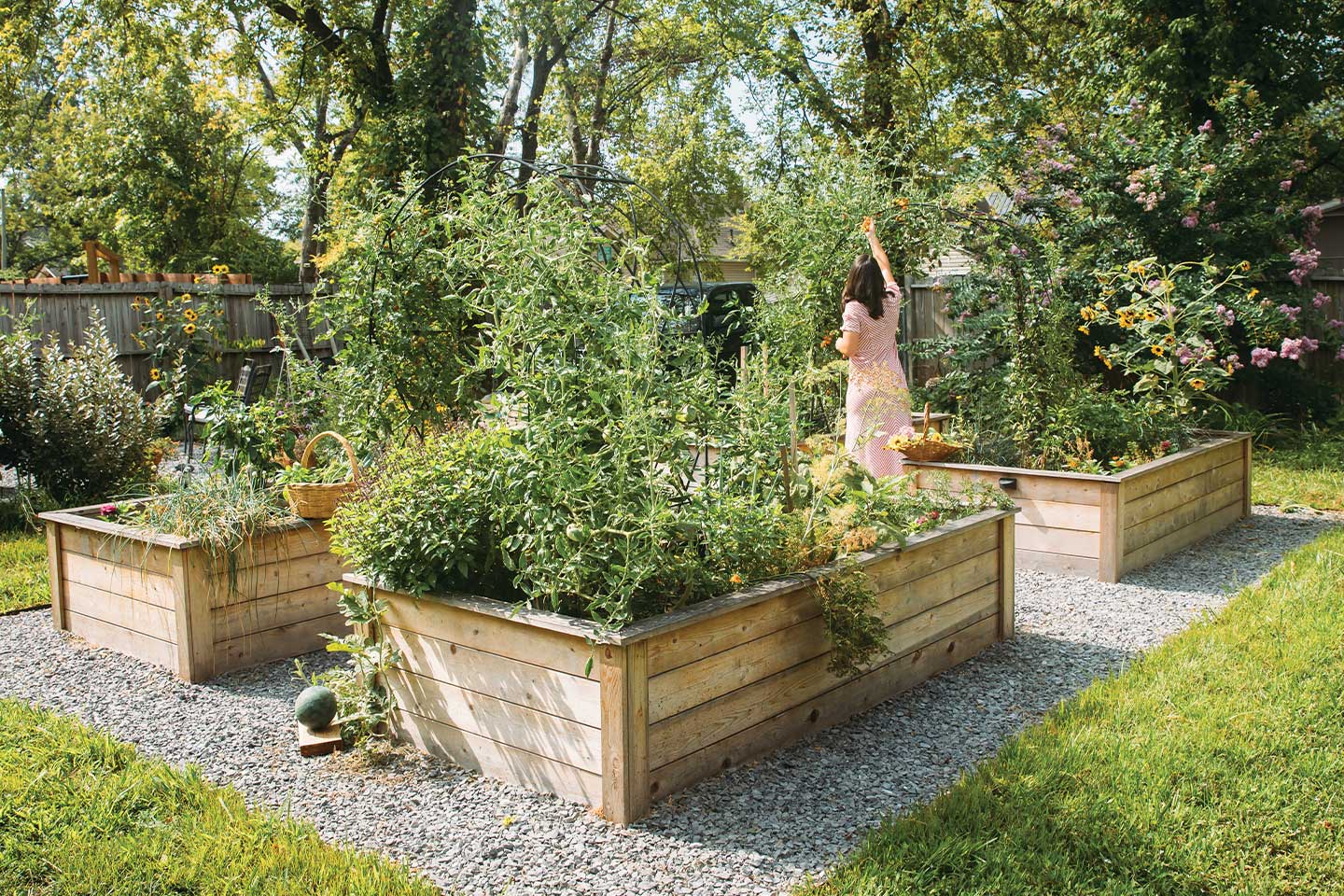
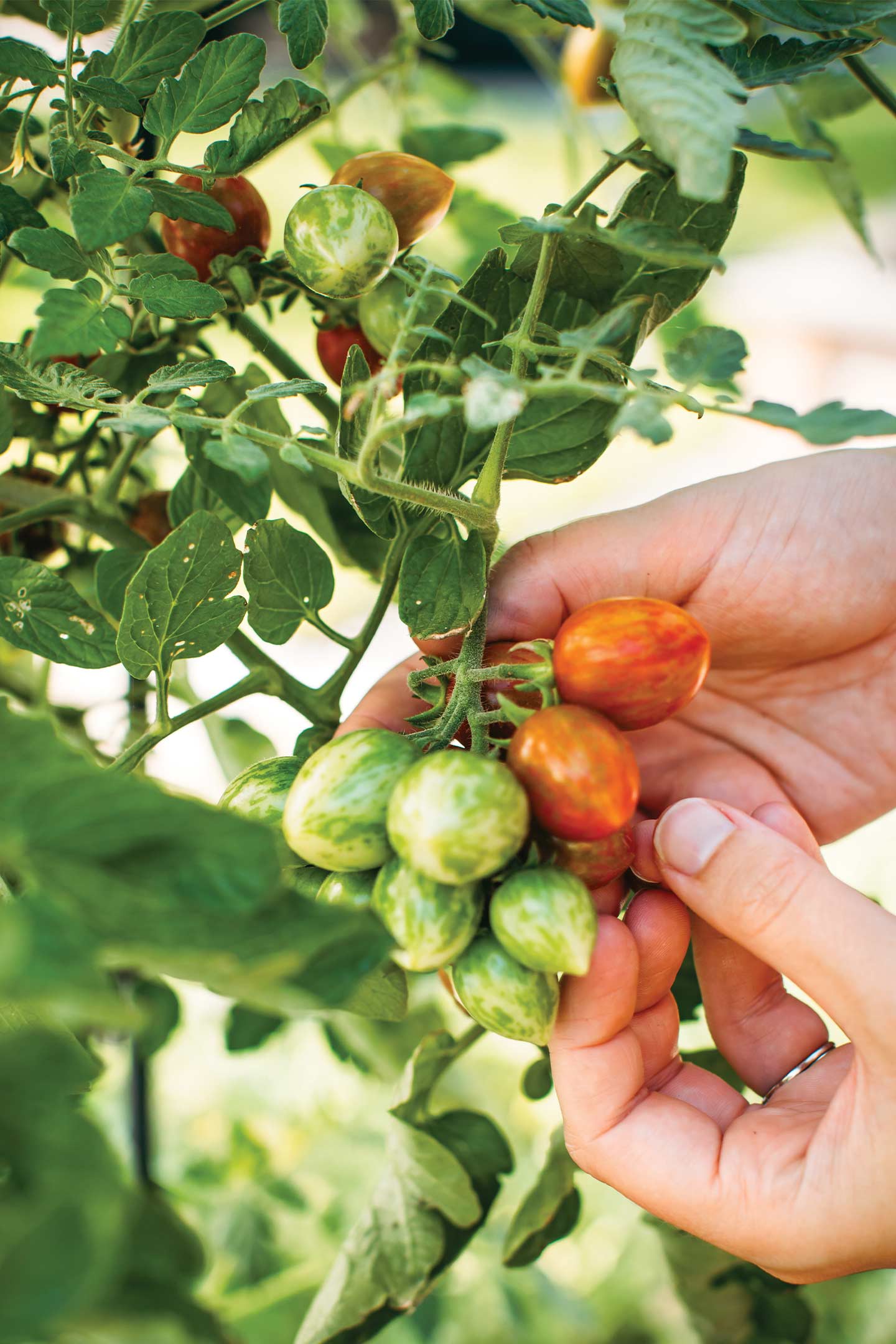
Photos by Sarah Unger
Katie Hinson
When asked about how she got into gardening, Katie Hinson credits various life moments and people that have provided inspiration along the way – an elementary school garden, grandma’s houseplants, and traveling, to name a few. She began with a patio garden in college, then took her passion a step further and went to school for landscape horticulture, in addition to working for a nursery. Since then, she has transformed her backyard from grass to garden, started a gardening business, and became a Master Gardener in 2023.
Hinson’s garden is a Certified Wildlife Habitat and a Silver Award RainSmart yard. She enjoys planting flowers, fruits, and vegetables, and she focuses on diversifying the plants she grows. “Tulips, green beans, peonies, and sunflowers bring me joy every year,” she shares. “I have hundreds of tulips. My dad and I are always in charge of the green beans at Thanksgiving – nostalgia and the ease of growing them make them one of my favorite edibles to grow. The fragrance and frills of a peony are unlike anything else, and sunflowers feed the songbirds. Growing has connected me to seasonal eating. Each season brings new food to the table.”
Hinson’s passion for gardening also extends to her business, Umbel Gardens, in which she helps others design and execute kitchen gardens customized to the client’s goals and aesthetic. To begin planning a garden, Hinson recommends drawing a map of the garden and observing your space – both naturally and functionally. Then, imagine everything you’d like to see or do in the space, map it out, and make plant selections based on your observations and goals. She says, “Our properties are part of a larger ecosystem where unique combinations of soil, water, flow, and climate create a distinct ecoregion. By creating a sustainable, organic garden, you bring beauty to your world while benefiting our local, regional, and global environment.”
Hinson begins many mornings enjoying her garden space, saying, “Each morning I spend time gazing at the buds, blooms, and bees with a cup of coffee. Seeing a new fiddle head unfurl, watching monarchs munch on milkweed, and eating warm tomatoes off the vine in my own backyard brings me immense joy. It’s really grounding to create an environment where nature can flourish right outside your window.”

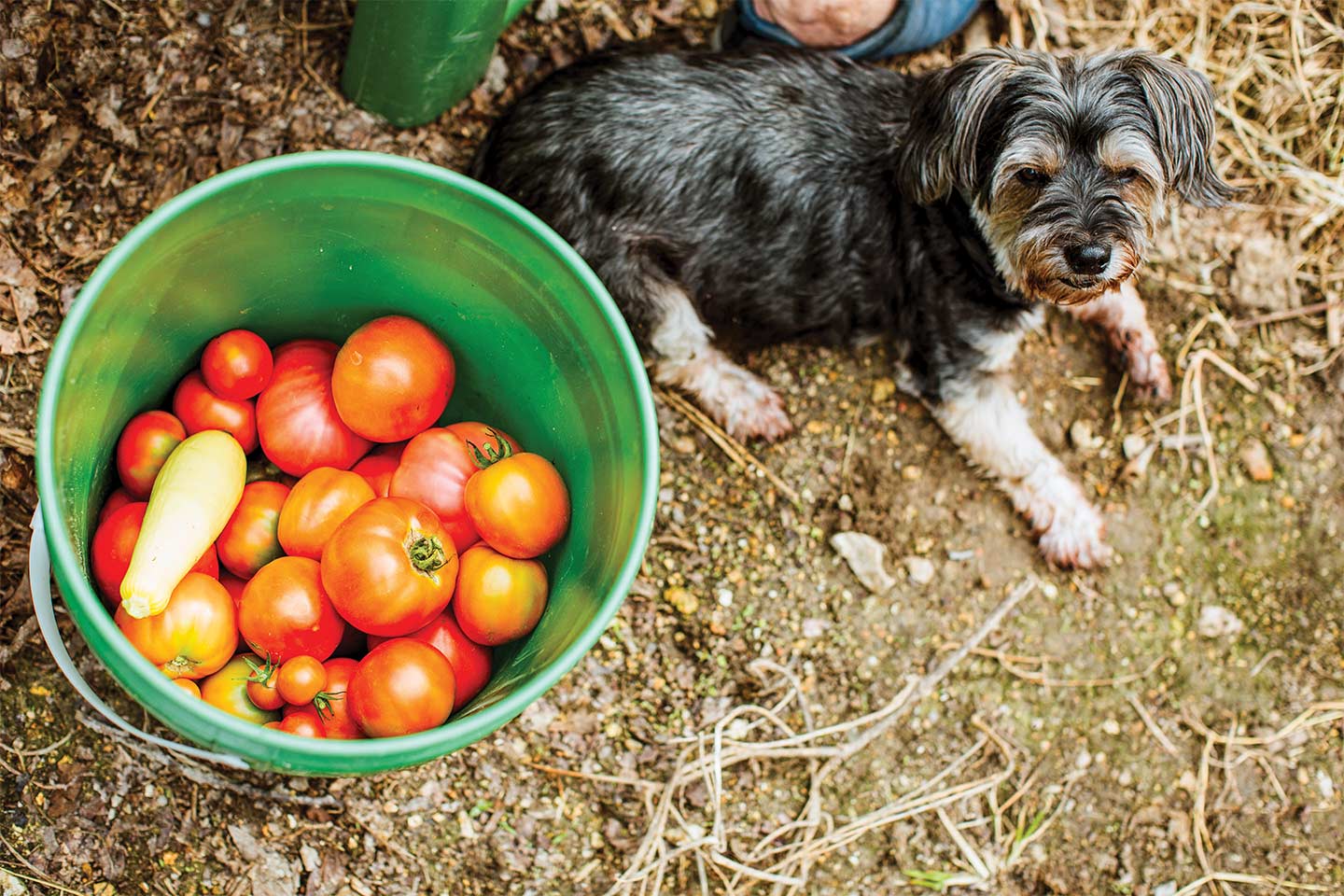
Photos by Rich Smith
Joe and Alberta Nichols
For Joe and Alberta Nichols, gardening has been an ever-present source of food and joy in their lives. “I’ve been gardening for a lifetime,” says Joe. “Our family garden was our grocery supplier. We grew corn and ground it for cornmeal or chicken feed, and we had storage for a year-round supply of Irish potatoes.” Alberta shares this experience, having grown up on a farm in Indiana. After retirement, Alberta sought out Master Gardening classes, and Joe joined her. The two are now both Master Gardeners, growing their own food and sharing it with others.
Alberta and Joe grow a variety of foods in their garden, including tomatoes, okra, green beans, collards, sugar peas, squash, cabbage, and turnip greens. They enjoy the health benefits gardening provides, and Joe says, “It has dietary benefits and allows for better food on the table, as well as better physical and mental health.” Joe encourages those just starting out with a garden to identify and use natural resources, learn from mistakes, and dig in to both soil and research. “There are lots of garden spots that are overgrown with weeds, vines, and trees that could have a better use. Join a group or ask a neighbor for support and information,” he says.
In addition to the health benefits, gardening allows Joe and Alberta to give back to their community. During the COVID-19 pandemic, more time at home proved an opportunity to expand their garden. “We provided fresh produce to the hungry through the Soddy Daisy Food Bank,” says Joe. “Others at Burks Methodist Church joined a ‘Grow a Row’ program which grew into a produce table to provide fresh produce from our garden along with requests for donations to the food bank.” Joe continues to supply and staff the produce table twice a week, and he enjoys opportunities to teach and lead in the gardening space. “The need for food and beauty never ends,” he says. “Sharing with others, and especially young people, is important.”



Photos by Rich Smith
Betty Thomas Smith
Betty Thomas Smith caught the gardening bug early, and her passion only grew from there. “I grew up on a dairy farm,” she says. “My love of growing vegetables and flowers began when I was a little girl, and that love has been carried with me to this day for more than 50 years.”
Hoping to expand her knowledge and learn all she could about plants and the environment, she took a 15-week Master Gardener course with her daughter in 2017. “Through the classes, we learned about which plants were native to Tennessee and how and where to plant them. Our instructors taught us not only about plants but also a variety of horticultural topics,” she shares.
When asked about what she likes to plant, Smith tends toward both beauty and practicality. “I like to plant a few vegetables in with my flowers. They not only produce food but have a certain beauty of their own,” she says. “When I have a garden filled with plants and vegetables, I get a sense of satisfaction and pleasure from watching it grow. Gardening brings beauty to our surroundings and is a host to bees, butterflies, and other little creatures.”
In order to not only upkeep but also enhance her garden, she finds inspiration in videos, magazines, and visiting parks and other gardens. She also takes a “plan as I go” approach, rather than planning large sections. Smith enjoys reading up on the best ways to care for the plants, saying, “You can’t just plant something and forget about it. You have to make sure you water and fertilize it. When you purchase plants, be sure to read the instructions and follow them. I read about my plants so I know how to maintain them. Every few days are spent weeding. I’m passionate about gardening. It brings joy and peace to me. But, it’s a lot of work.” Although it may be a lot of work, Smith can enjoy the fruits of her labor in her beautiful garden full of a variety of vegetables and flowers such as hydrangeas, Kellogg’s lilies, balloon flowers, marigolds, zinnias, and more.





